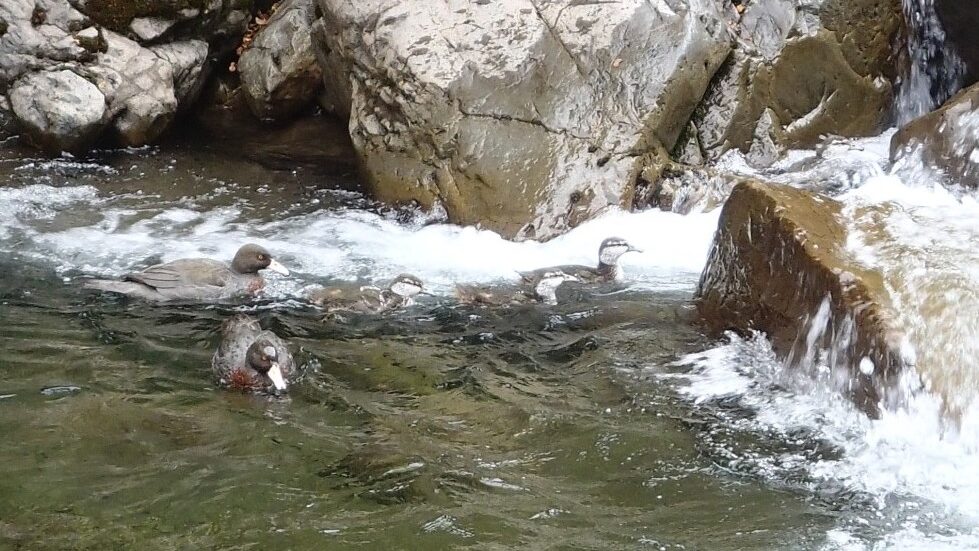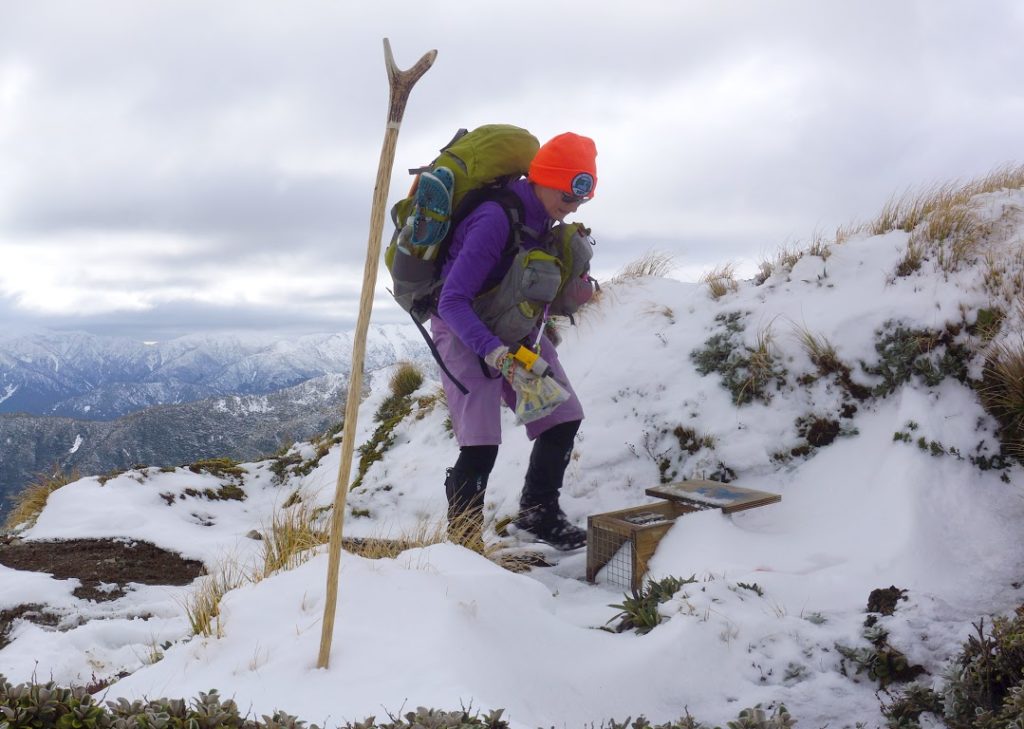New Zealand’s whio or blue duck (Hymenolaimus malacorhynchos to those with a fondness for Latin), likes nothing better than the turbulent white water of a fast-flowing mountain river. Its preferred habitat is so rugged that blue ducklings hatch with unusually large feet, even for ducks.

Having big feet means they’re better able cope with the strong river currents. So perhaps it’s not surprising that the 25 or so key volunteers in the Oroua-Pohangina Blue Duck Protection Project tend to be a rugged, hardy lot too.
Drawn mainly from local tramping and deerstalking clubs, the Oroua-Pohangina project volunteers know the Ruahine area well and regularly brave high river levels and snowfalls to check and rebait traps. About 180 of their traps can be easily accessed all year round and are checked and rebaited monthly. The rest are checked monthly when conditions allow. Snow and swollen river levels tend to make these traps inaccessible from July to October, but the volunteers go in when they can.

Their dedication is paying off. In the early years, when the deerstalkers organised the project, 101 stoats and 629 rats were caught over a three-year period (2008-2011). Since then, with a broader volunteer base and up to 520 traps in place, the Oroua volunteers have caught another 350 stoats and 1700 rats. The 2012/2013 July to June season was a particularly big one. Coinciding with a probable beech masting, the total catch for that year was 143 stoats and 459 rats.
Janet Wilson has been coordinating the volunteers since 2011. It looks like this season will see another beech masting, so she’s expecting trouble. Trap numbers were increased by 220 last year and this summer the group is hoping to expand its trapping further around the Pohangina River area. For the first time they will be using double-set DOC 200 traps – said to be current best practice for killing stoats. Research has shown if the first kill in the trap is a rat, it increases the likelihood that a stoat will be lured in as the second kill.

Janet would like to slowly increase the trapping network, at a rate that can be sustained by a growing base of volunteers. There is a lot of goodwill for the work and the local DOC office is also very supportive with good planning advice. A new Whio Management Plan for the Ruahines has just been released.
University students are getting involved too. A Massey university lecturer is incorporating Blue Duck protection field experience into his ‘Conservation Biology’ course and Janet hopes that some of the university undergraduates she takes into the Ruahines might one day make whio the focus for their post-graduate research.
In the longer term, Janet would like to see regular, ongoing counting of whio numbers to find out how many blue ducks are in the Ruahines and whether their numbers are increasing. In the meantime she has organised trampers and DOC to put up posters in the area’s tramping huts encouraging people to report blue duck sightings. Whio can be hard to spot, but if you’re tramping in the Ruahines this summer, do keep an eye out. They’re the tough little white-water ducks, with rather large feet.

